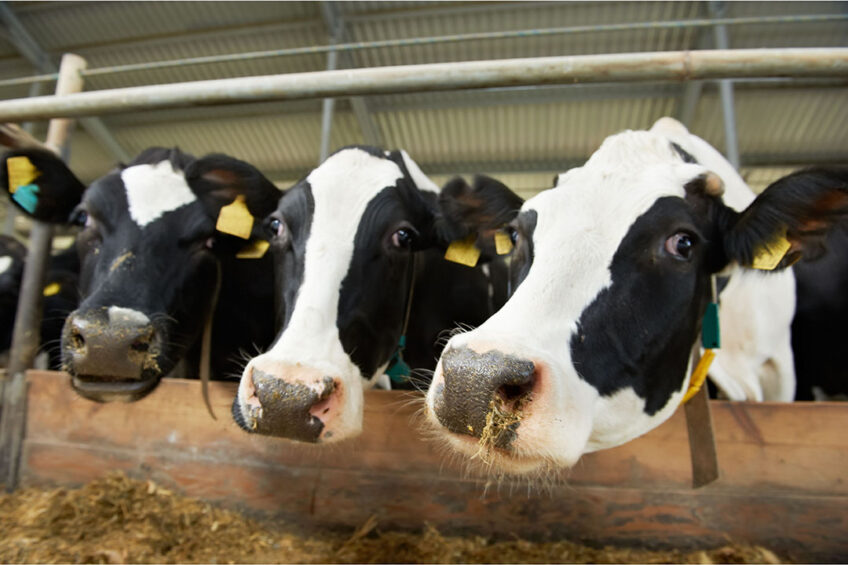Benefits of nutritional grouping in dairy farms

Differences in nutritional requirements of individual cows exist even if the group is formed by cows of similar age, the number of lactations, and the lactation stage. Nutritional grouping aims at allocating lactating cows homogeneously according to their nutritional requirements.
Common dairy farm management setup does not support formulating a diet that accurately matches individual nutritional requirements for each cow; therefore, a proportion of cows in the group could be overfed or underfed. This negatively affects farm profitability and the environment. Groups of cows with more uniform nutritional requirements facilitate the formulation of more accurate diets for the group.
In a recent study, researchers from the University of Wisconsin-Madison dissect nutritional grouping approaches and their associated benefits on dairy production.
Nutritional grouping
Improving dietary nutritional accuracy is part of the process to enhance precision dairy farming.
Nutritional grouping involves the grouping of cows with similar nutritional requirements and providing an adjusted diet to each group. This facilitates improved allocation of nutrients due to decreased variance of nutritional requirements within each group. As a result, dietary nutritional accuracy increases due to improving the match of diet to cow’s nutritional requirements.
In this study, researchers focused on important factors to consider when grouping cows, methods for grouping cows by nutritional requirements, and the benefits of nutritional grouping.
Former extension dairy specialist at Oregon State University, Mike Gamroth, summarised nutritional grouping: “It promotes feeding valuable nutrients to benefit cows at different stages of lactation and results in optimum efficiency, productivity, and profitability.”
Nutritional grouping methods
Besides nutritional grouping, the researchers pointed to some essential factors to be considered for grouping cows: social interaction, body size and condition, age, days in milk, stocking density per pen, stocking density at the milking parlour’s holding area, feeding space, lying space, stall and barn design.
From the wealth of studies analysed, it was found that a nutritional grouping strategy can be implemented using 4 main methods: ranking clusters, an iterative search of global maximum income over feed cost (IOFC), OptiGroup, and K-means analysis. The algorithm to be used depends on the farm’s data and facilities, goals, and grouping management practices.
- Ranking-cluster group cows according to their net energy (NE; NEL + NEM) and CP requirements.
- Different from the ranking-cluster method, the IOFC method allocates cows by nutrient requirements to a predetermined number of groups and size of those groups, then maximises the global IOFC of the herd.
- In 2019, a team of researchers suggested the OptiGroup as a method to implement nutritional grouping. OptiGroup consists of finding the cows’ group arrangement that maximises the global IOFC of the herd using a mixed integer nonlinear programming optimisation algorithm.
- K-means analysis capable of grouping cows according to NEL and metabolisable protein requirements and any other nutritional requirement parameters at the same time.
Following his research, Professor Cabrera at the University of Wisconsin-Madison, USA, specialist in dairy farm management and economics found, said that if the farmer does group cows for feeding, the grouping decision may be improved by:
- Selecting the right number of feeding groups
- Selecting the right group criterion
- Optimising the animals belonging to each group
Benefits of nutritional grouping
Milk production
It is emphasised that feeding multiple rations that better match nutritional requirements enhance the potential milk productivity of high-production cows and decrease the over-conditioning of cows with lower milk yield.
Economic benefits
The researchers concluded that decreased nutrient losses and greater nutritional accuracy through better allocation of dietary nutrients can improve profitability by increasing milk yield and decreasing dietary costs. In a simulation study, using a ranking and iterative method for maximising global IOFC of the herd, researchers found that 3 nutritional groups increased income over feed costs by US$396/cow per year.
Environmental benefits
The team stated that “nitrogen and other nutrients excretion as waste can be reduced by implementing a nutritional grouping strategy due to better allocation of dietary nutrients”.
They found that when the number of nutritional groups increases, the total percentage of captured nitrogen in milk increases, benefiting the environment. They added that less nitrogen is excreted as waste when low-production cows are fed a diet that better matches their nutritional requirements. In another simulation study, an optimum of 6 milking groups per production unit reduced nitrogen excretion by 8% compared to herds fed in 1 group.
The next step
The researchers concluded that even though grouping is a common practice in dairy farms, some dairy farmers rarely implement it due to the potential implementation complexity and potential loss of milk productivity due to social cow interaction adjustments when moving cows among groups. But they believe the use of advanced management record systems and algorithms that can provide real-time large data streams can help implement the strategy in a more efficient and accurate manner.
As most studies were simulations, they also pointed to the need for further field research to measure and quantify the effect of using the nutritional grouping strategy on milk production, economics, and the environment.






